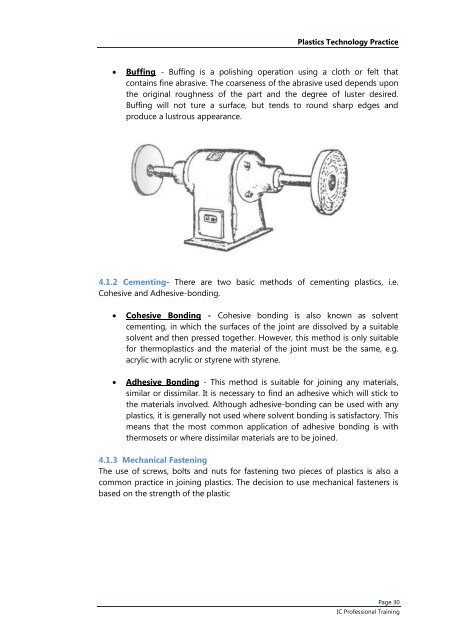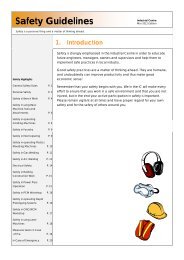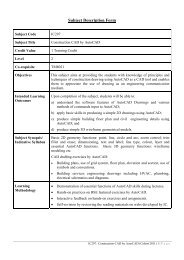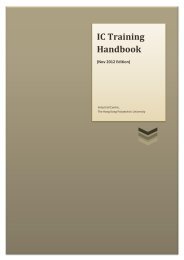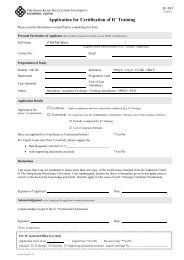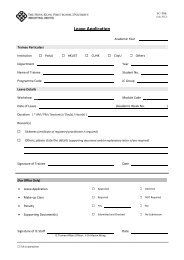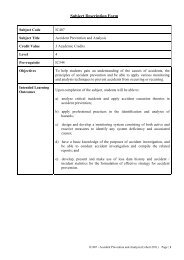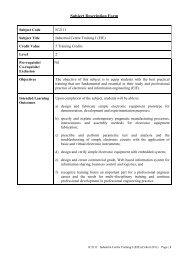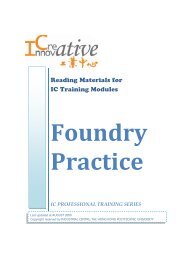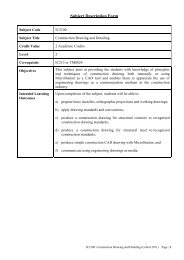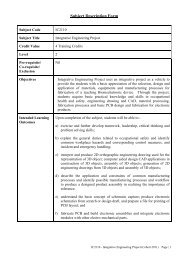Plastics Technology Practice - The Hong Kong Polytechnic University
Plastics Technology Practice - The Hong Kong Polytechnic University
Plastics Technology Practice - The Hong Kong Polytechnic University
You also want an ePaper? Increase the reach of your titles
YUMPU automatically turns print PDFs into web optimized ePapers that Google loves.
<strong>Plastics</strong> <strong>Technology</strong> <strong>Practice</strong><br />
• Buffing - Buffing is a polishing operation using a cloth or felt that<br />
contains fine abrasive. <strong>The</strong> coarseness of the abrasive used depends upon<br />
the original roughness of the part and the degree of luster desired.<br />
Buffing will not ture a surface, but tends to round sharp edges and<br />
produce a lustrous appearance.<br />
4.1.2 Cementing- <strong>The</strong>re are two basic methods of cementing plastics, i.e.<br />
Cohesive and Adhesive-bonding.<br />
• Cohesive Bonding - Cohesive bonding is also known as solvent<br />
cementing, in which the surfaces of the joint are dissolved by a suitable<br />
solvent and then pressed together. However, this method is only suitable<br />
for thermoplastics and the material of the joint must be the same, e.g.<br />
acrylic with acrylic or styrene with styrene.<br />
• Adhesive Bonding - This method is suitable for joining any materials,<br />
similar or dissimilar. It is necessary to find an adhesive which will stick to<br />
the materials involved. Although adhesive-bonding can be used with any<br />
plastics, it is generally not used where solvent bonding is satisfactory. This<br />
means that the most common application of adhesive bonding is with<br />
thermosets or where dissimilar materials are to be joined.<br />
4.1.3 Mechanical Fastening<br />
<strong>The</strong> use of screws, bolts and nuts for fastening two pieces of plastics is also a<br />
common practice in joining plastics. <strong>The</strong> decision to use mechanical fasteners is<br />
based on the strength of the plastic<br />
Page 30<br />
IC Professional Training


